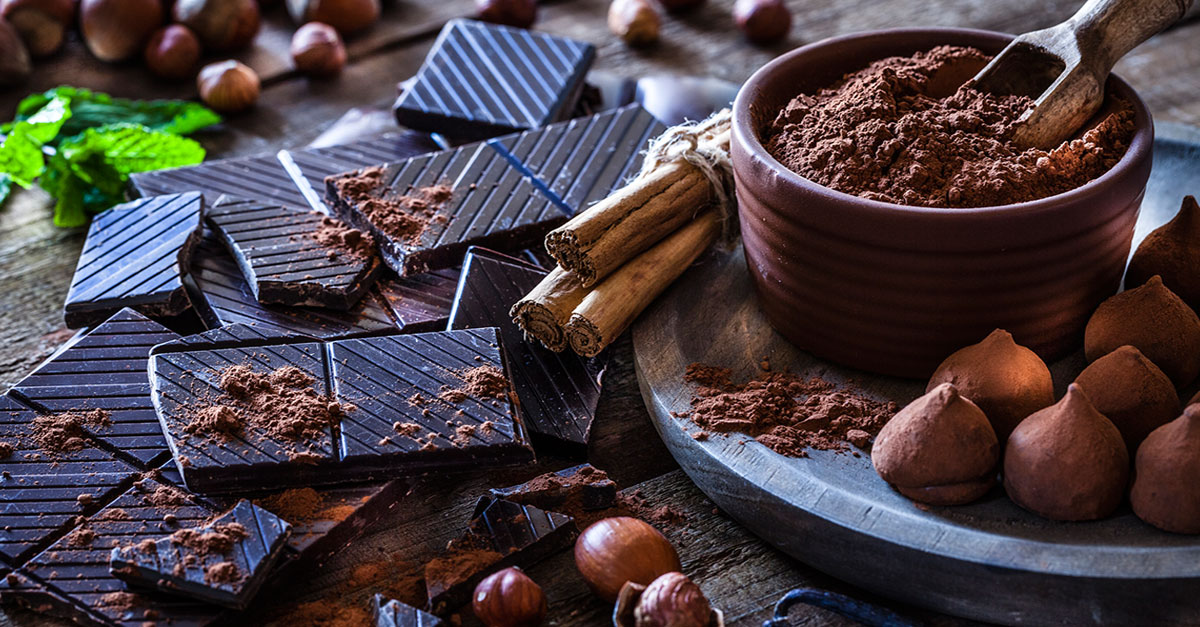Dark chocolate—with a high content of cocoa—is now considered a bona fide health food and a guilt-free superfood! You may have heard that it can be good for your heart. It’s been linked to reduced arterial inflammation, for example, and lowered blood pressure, particularly in people who have hypertension. To get the heart benefits, the recommended “dose” of dark chocolate is approximately 30 g to 60 g per day (roughly one to two ounces, or one to two squares). But those aren’t the only salutary effects from dark chocolate. An increasing body of evidence shows an even broader range of potential health benefits—from improving short-term memory and alertness by increasing blood flow to the brain…to curbing diabetes risk by improving the body’s response to insulin.
What is the magic ingredient in dark chocolate? Flavonoids—the powerful, disease-fighting subclass of polyphenols (plant chemicals) that pervade the plant kingdom. And cocoa contains lots of them. In fact, dark chocolate has such a highly concentrated amount of flavonoids that it beats out tea and red wine, ounce for ounce, and has almost five times the amount of these miraculous plant chemicals than an apple. Here is one of my favorite dark chocolate recipes…
European To-Die-For Decadent Hot Chocolate
 Ingredients:
Ingredients:
1½ cups 1% milk
½ cup soy creamer
1 packet Splenda (or sweetener of choice)
1 teaspoon instant coffee
8.8-ounce Trader Joe’s Pound Plus 72% Cacao Dark Chocolate bar (half the bar), chopped into small pieces
Fat-free whipped cream
Directions: Over medium heat, whisk together in a medium saucepan the milk, creamer, sweetener and instant coffee until small bubbles form around the edge (but don’t let the mixture boil). Add the chopped chocolate pieces. Stir until melted, about five minutes. Serve in espresso cups (one-quarter cup is rich enough to satisfy any chocoholic) and top with a squirt of fat-free whipped cream. Makes eight servings (one-quarter cup each).
Nutrition information per serving: Calories, 190…fat, 15 g…cholesterol, 5 mg…carbohydrates, 18 g…sugar, 11 g…protein, 4 g…sodium, 40 mg.
Shopping for chocolate: To ensure that you’re getting enough cocoa and not too much sugar, always opt for dark chocolate—not milk. To start, do a quick check of the label to make sure that the first ingredient on your chocolate bar is chocolate or cacao and not sugar. Note: All chocolate products are made from the beans of the cacao tree. Also, pay close attention to the percentage number on the wrapper. This indicates the percentage of the bar’s weight that comes from the cacao bean. (Aim for at least 65%.) The higher the percentage of cocoa, the lower the sugar content.
Important: If you’re using cocoa powder, skip the “alkalized” or “Dutch-processed” varieties—two flavonoid-robbing manufacturing procedures. Good product: Natural, unsweetened Hershey’s 100% Cocoa.
And remember that chocolate is highly caloric, so be sure to eat it by the piece and not by the pound!


